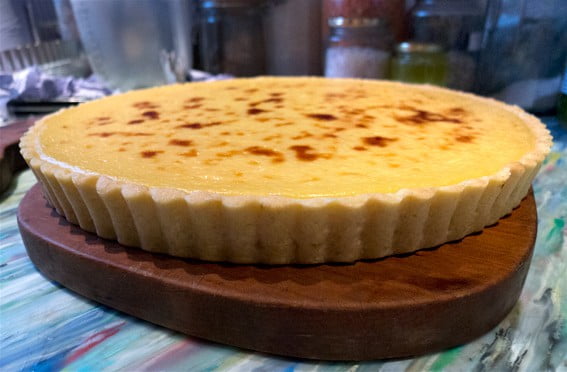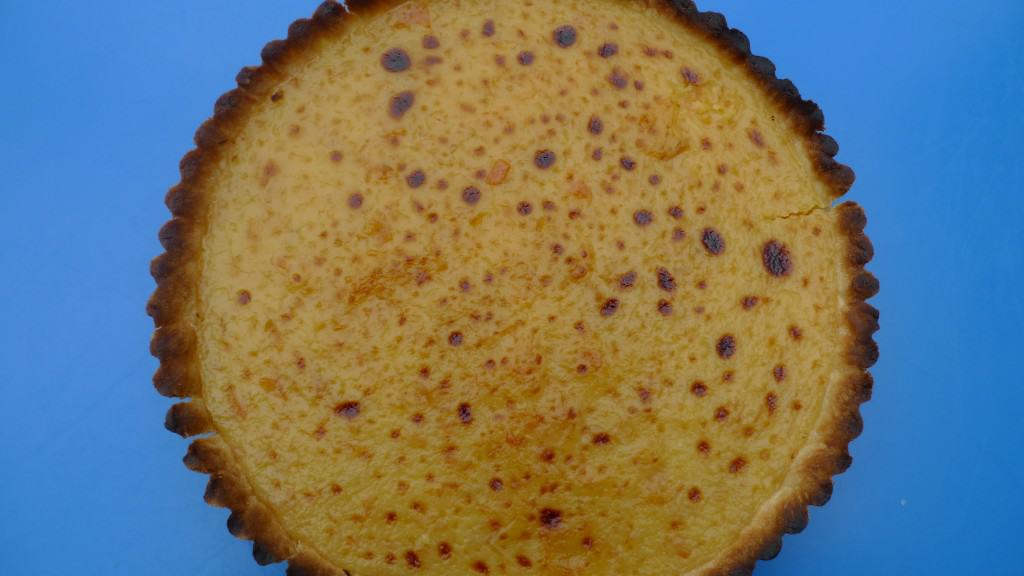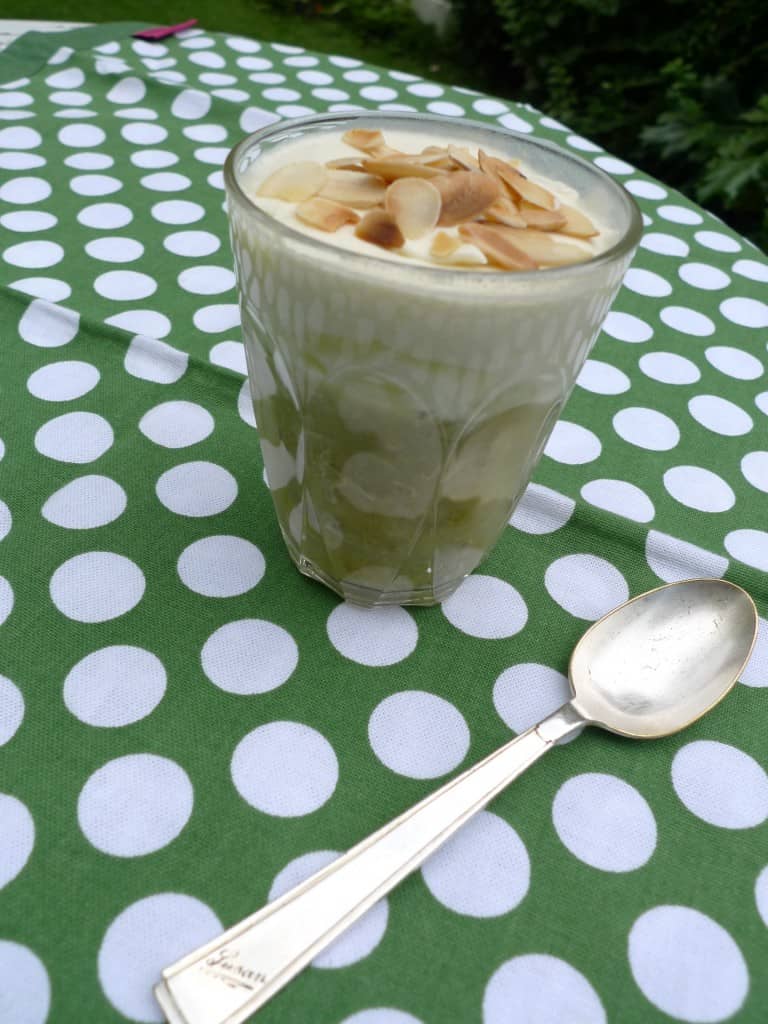Tarte au citron: Lemon tart recipe
For my annual festive lunch this year, I made a large lemon tart. Tarte au citron definitely ranks up there as one of my all time favourite desserts. I adore lemons and use them prodigiously in my everyday cooking….thinly sliced in salads, lemon and oil as a salad dressed, squeezed liberally into smoked trout pate, hummous or baba ganoush. As part of a tingling morning drink mixed with orange juice. If you can get hold of Amalfi lemons they are wonderful – try Natoora or a specialist greengrocers. If not try and use unwaxed lemons from a supermarket – better flavour and the zest tastes amazing!
It’s fear of pastry that puts most people off making any kind of tart. Pastry is really not that difficult – it takes some practice and you have to follow some basic rules such as using cold butter, resting the dough in the fridge for at least an hour before using, handling the pastry as little as possible and a very particular method of putting the pastry into the tart case which I learned when I was an apprentice cook at Stevie Parle’s Dock Kitchen. This method of blind baking does not require the faff of baking beans or suchlike. Over the past year my pastry skills have improved so much so that I was really quite proud of the edge of the pastry.
Serves 12-14 people
FOR THE PASTRY
350g plain flour
a pinch of salt
175g unsalted butter (cold), cut into cubes
100g icing sugar
3 egg yolks
FOR THE FILLING
finely grated zest and juice of 7 lemons
350g caster sugar
6 whole eggs
9 egg yolks
300g unsalted butter, softened
Pre heat the oven to 160ºC/325ºF/Gas 4
For the sweet pastry, pulse the flour, salt and butter in a food processor until the mixture resembles coarse breadcrumbs. Add the icing sugar followed by the eggs yolks and pulse. The mixture will immediately leave the sides of the bowl and combine. Spread out a 30 cm piece of cling film on a surface, remove the pastry, bringing it together with the help of the cling film and chill in the fridge for at least one hour.
Coarsely grate (yes grate!) the pastry into a 30cm (12 inch) loose bottomed fluted tin, pressing it quickly, evenly and firmly onto the sides and base. Try not to work the pastry too much. Put the tart shell in the freezer for 15 minutes until hard, then bake in the oven for about 15 mins or until pale brown and firm to the touch. (NB try not to over cook the shell as it will require further baking when filled). Let the case cool off for 15 mins while you make the filling.
Put all the ingredients except the butter in a large saucepan over a very low heat, and whisk until the eggs have broken up and the sugar has dissolved. I recommend whisking the whole eggs in a little bowl with a fork before adding to the lemon juice, zest and sugar. It will then be easier to amalgamate the 9 eggs yolks.
Add half the butter and continue to whisk. At this point the eggs will start to cook and the mixture should coat the back of a metal spoon. Add the remaining butter and continue stirring until the mixture becomes very thick. It is important to continue whisking throughout the cooking process to prevent the mixture from curdling. Remove from the heat, place on a cold surface (this stops the cooking process) and continue to whisk until the mixture is lukewarm.
Raise the oven temperature to 230ºC/450ºF/Gas 8
Spoon the lemon filling into the pastry case and bake until the top is brown. This should take about 8-10 mins. If like me, you like little brown spots on your lemon tart – place the tart under an oven grill keeping a wary eye lest it should burn. My grill is quite fierce so turning the tin helps an even browning. If you do find that your pastry edges are burning – cut a thin long length of foil and apply to the edge of the tart to protect it while it is under the grill.
Remove from the oven and allow it to cool before slicing.
Serve with crème fraiche or solo with an artfully placed splash of fruit couli next to each slice.

Note: 9 egg yolks means nine lots of egg whites. You can make coconut chocolate macaroons (David Lebovitz has a great recipe!) or financiers with the leftover egg whites. Egg whites can be also be frozen very successfully in small freezer bags though make sure to label with the number of whites before freezing.















